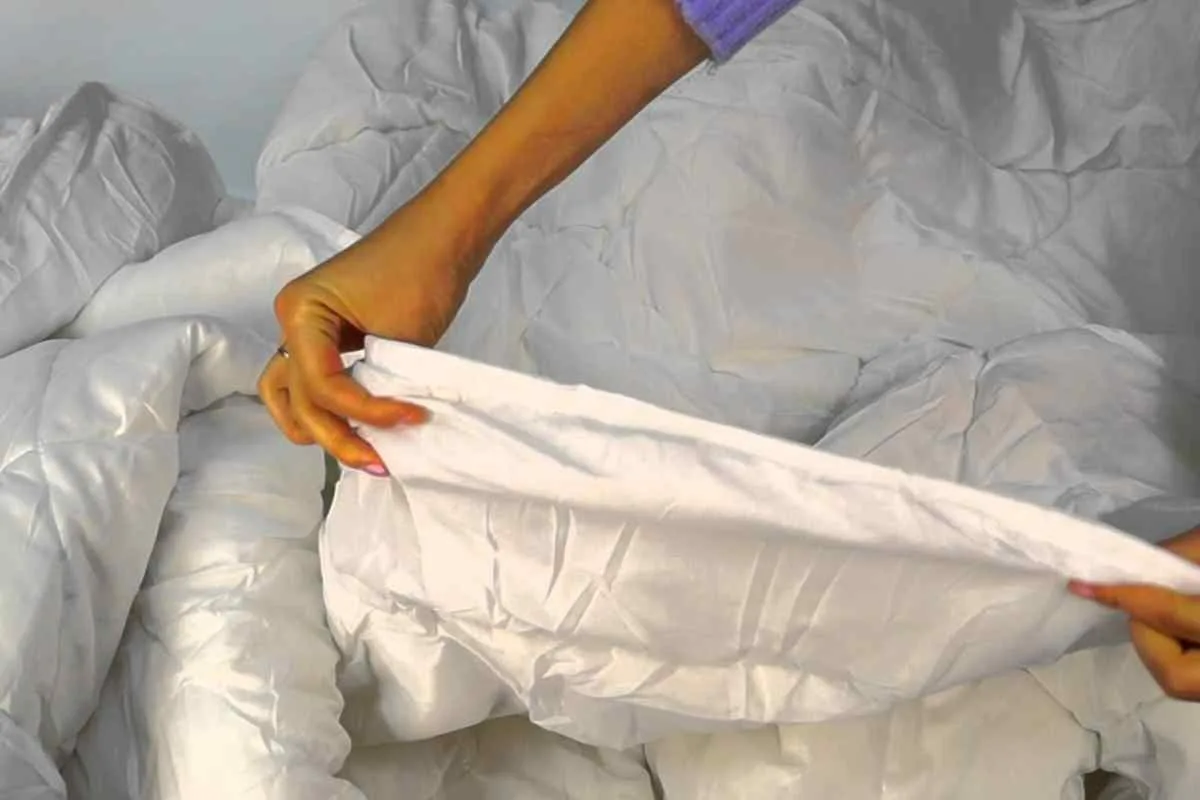With this little advice, you can extend the useful life of these essential winter garments. Washing a duvet can turn into a minor domestic ordeal if the right steps are not followed. Many people have had the experience of taking their duvet out of the washing machine and discovering that it looks more like a lifeless piece of clothing than that fluffy coat that so often protected them from the cold. What happened? Is it ruined forever? The answer is no. And best of all, there is a solution.
Washing: the key to avoiding disaster
The first step to prevent a duvet from becoming flat or deflated begins long before drying. Ideally, you should make sure that the garment can be machine washed. This is especially important in the case of natural down, such as goose down, as it requires more delicate care.
Once this has been verified, the washing machine should be set to the delicate or wool program, with a maximum temperature of between 30 and 40 degrees and a low spin speed. This reduces the risk of damaging the filling. A very effective trick is to add a couple of clean tennis balls to the drum: they act as massagers that prevent the feathers from becoming matted during washing.

As for the detergent, it is best to use a moderate dose and never add fabric softener. Why? Because excess soap can become embedded in the filling and make rinsing difficult, promoting the formation of lumps and causing that dreaded “empty jacket” effect.
Drying: the moment of truth
Once washed, it’s time to dry the duvet correctly. There are two possible ways to do this, depending on whether or not you have a dryer.
- 1. With a dryer: This is the most effective option for restoring lost volume. As with washing, it is recommended that a couple of tennis balls or dryer balls be placed with the garment. This helps to separate the feathers and keep them fluffy. The program should be on a low temperature and, if possible, check every so often to make sure it is drying evenly.
- 2. No dryer: If you don’t have a dryer, the process will be a little slower, but it’s still possible. The best thing to do is to spread the duvet out on a flat, well-ventilated surface, away from direct sunlight and sources of intense heat. Shake it frequently and change its position to allow air to circulate between the feathers.
When the duvet stays flat: rescue techniques

If, despite everything, the duvet comes out of the dryer caked or shapeless, all is not lost. One of the most practical and accessible solutions is to use a hairdryer, always on the lowest temperature. This method consists of directing the hot air towards the sunken areas, entering through the cuffs and the collar if it is a jacket, or focusing directly on the affected parts in the case of a bed comforter. The heat helps to evaporate the remaining moisture and loosen the feathers, restoring their natural volume.
Another technique is more manual, but equally effective: shake the garment vigorously several times a day and gently massage the flattened areas to redistribute the filling. Consistency is key here.
In many cases, problems when washing duvets are due to washing machines that are too small for the size of the filling. If the garment does not have room to move freely, it is very likely that the feathers will become compressed, accumulate moisture and form lumps. Therefore, if your washing machine is not big enough, it is best to go to a laundry with industrial machines.

Looking after a down duvet doesn’t have to be an impossible task. With the right program, the intelligent use of tennis balls and conscious drying, you can extend the useful life of these essential garments. And if something goes wrong, don’t despair: with a little hot air and patience, even the most flattened duvet can be restored to its former glory.









